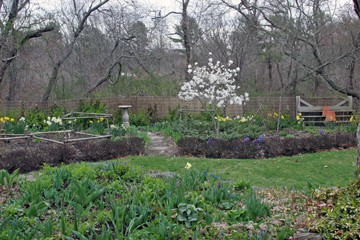
In the early spring it’s tempting to get out and fertilize the lawn on a balmy day, but an early application of fertilizer isn’t always a good idea.
A couple of years ago Massachusetts had a snowstorm in late April. The snow melted over the next two days, and the week after it was gone the grass looked a bit greener. My neighbor noticed it too. “Poor man’s fertilizer.” he said, nodding his head. The explanation is simple. As the snow falls it picks up nitrogen from the air. If the ground isn’t frozen and the snow melts quickly, that small amount of nitrogen fertilizes the lawn.
Having the grass green-up in early spring is kind of nice. We’re hungry for the colors of growth after the dormancy of winter. But don’t rush things. Greener grass from a spring snowfall is fine, but you shouldn’t try to green-up your yard by spreading fertilizers too early.
While the air may feel balmy, the soil is still cool. Turf doesn’t begin to actively grow until the soil warms up, and for most of the Northeast this is in May. If you fertilize while the ground is still cold, the grass won’t be able to fully use those nutrients. In fact, when the grass begins to grow in the spring it is initially using energy that it stored last fall, not the nutrients from the soil.
Lawn fertilizers are high in nitrogen, but nitrogen doesn’t hang around in the soil waiting to be useful. If this nutrient is applied too early it will wash away before the grass can absorb it, especially if you aren’t using an organic fertilizer. So spreading your fertilizer too soon is like pouring part of it down the storm drain.
Now, just because you can’t fertilize doesn’t mean those invigorating spring days have to go to waste. This is the perfect time to rake up dead grass, and collect soil for a pH test. Based on the results of this test you can spread lime if it’s needed. So take out your rake, but leave the fertilizer spreader in the garden shed until the soil gets warm.
